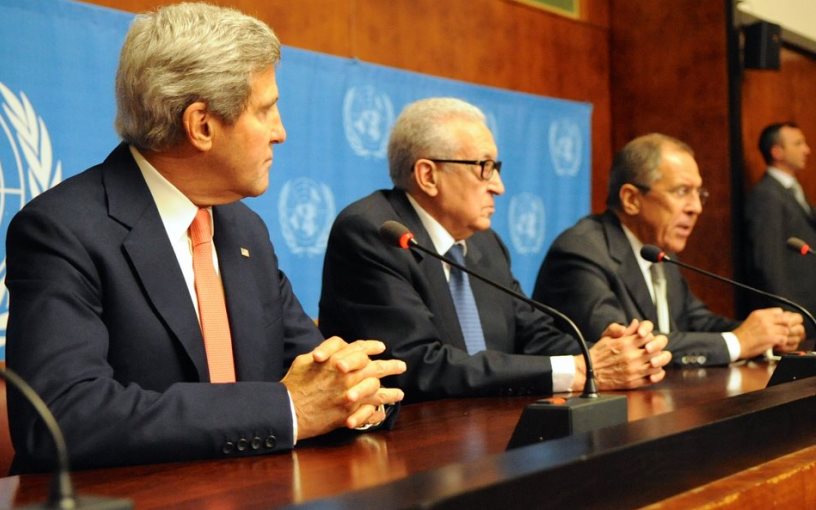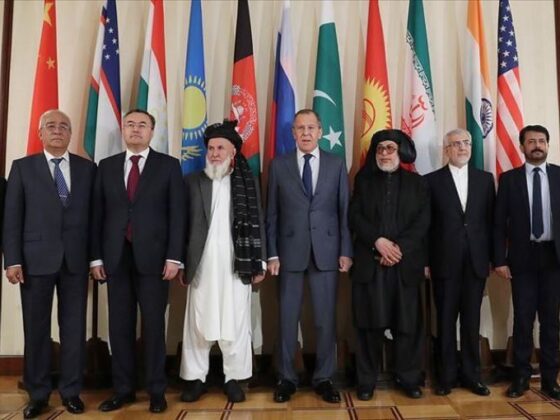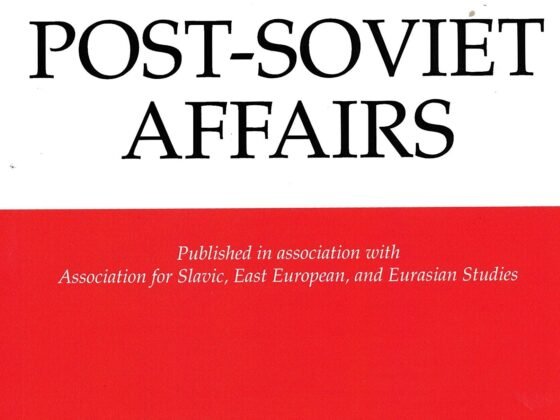(PONARS Eurasia Policy Memo) Actors in world politics often claim positions in the global pecking order on the basis of their ability to achieve desired outcomes in major areas of interest. Nations that are convinced in the effectiveness of their statecraft become worried if someone else demonstrates a better record of purposeful action. That feeling becomes stronger if the intentions of the actor with an edge in statecraft are perceived as malevolent.
The United States and Russia have a long history of concerns with surprise leaps in each other’s ability to exercise power. The current “scare” phase of presumed ongoing mutual subversion has particularly dire consequences for the bilateral relationship. For example, most negotiations between Washington and Moscow, including those on arms control, are doomed to fail given increased fears of exploitation by an opponent who is believed to be in possession of superior statecraft.
Intentions vs. Statecraft
A great debate about Russia’s intentions is unfolding. Observers seek to establish whether Moscow has a strategy, what its goals may actually be, and how successful Russia is in achieving those goals. However, since the end of the Cold War, that debate has been struggling with two problems. First, any concept of Russia’s intentions or strategy is doomed to be speculative because it is difficult to verifiably reconstruct the thinking of the country’s key decisionmakers who have traditionally been the only architects of any overt or covert strategy. Second, intentions are usually volatile even under a cohesive group of decisionmakers of a similar political creed. Moreover, forecasting intentions beyond a change of leadership in Russia has proved to be a particularly unrewarding task over the decades since the end of the Cold War.
Another popular dimension of analysis of Russian foreign policy and U.S.-Russian relations is “action vs. reaction.” It can allow one to forecast the policy moves of a counterpart and adjust negotiation strategy accordingly. However, first, the line between proportionate and disproportionate reaction is blurred. Second, being proactive is often the best approach to preventing the undesirable outcomes that one’s opponent is working for. Finally, a set of measures initially undertaken as reactive may prove useful beyond their initial purpose and form the basis for a proactive agenda aimed at consolidating the achieved success.
While analysts will always spend plenty of time trying to figure out intentions and plans at any given moment, it may be equally—if not more useful—to look at the ways and means through which foreign policy is carried out if one is to capture the most enduring features of a nation’s foreign policy. That is usually called statecraft analysis.
Statecraft is defined here as a set of patterns of activity undertaken to achieve measurable outcomes. To qualify for statecraft, such patterns must demonstrate a clear connection between cause and effect and be replicable; the unique confluence of actions and/or events that lead to a desirable outcome fall beyond the notion of statecraft.
The core aspect of a statecraft tradition is the concept of the achievable: to what extent can policymakers really control outcomes? In other words, what are the reasonable limits of a nation’s statecraft tools and methods of choice? Such question can be applied to particular contexts—short- or long-term, offensive and defensive, overt and covert, regional and global, political and economic—as well as types of outcomes to be achieved: involving deterrence or compellence, maintaining or thwarting the status quo, enlisting allies to one’s own bloc or splitting them off rival blocs, consolidating or changing regimes in other nations, etc.
Status Through Statecraft
One of the few similarities between the United States’ and Russian foreign policies is that they measure their standing in the world by the scope of the goals they believe they can purposefully achieve through statecraft. The U.S. tradition of purposeful action is anchored in the notion of policy. Policy is present in all spheres of social activity in America: actors need to have a “policy” to address manifold challenges from conflicts of interest and discrimination to privacy and diversity. Rooted in a positivist view of the world—the quest for consistent explanations of observed phenomena and clear-cut justifications for any significant act—policy is required to connect challenges, ends, and means.
Stakeholders in any policy require an explanation of the statecraft to be employed; usually their pressure cannot be ignored by policymakers whose political responsibility for the failure to formulate and achieve goals is sufficiently high in the United States. It makes drift at the level of serious policy difficult to afford.
In line with this tradition, the U.S. public and policymakers broadly view security—one of the core goals of any country’s external relations—as a product of statecraft as opposed to being a spinoff of a particular international order, a side effect of a freely-developing process, or just a result of a lucky confluence of events. To take one example, the U.S. public and large chunks of the policy community believe firmly that the United States should not be dependent on deterrence by punishment in preventing a missile attack against America—what is needed is deterrence by denial largely based on robust missile defense.
President Donald Trump has brought into the White House even more confidence in the success of purposeful action. Dismissive of long-established institutions and processes, he tends to trust his own vision and judgment. In particular, Trump is convinced that a mix of military pressure, sanctions, tariffs, and negotiations can deliver strong results on issues as diverse as trade with China, North Korea’s nuclear program, Iran’s behavior in the Middle East, and Venezuelan politics—all before the 2020 presidential election in the United States.
Russia under President Vladimir Putin has been equally keen to demonstrate the effectiveness of its statecraft—whether in post-Soviet Eurasia, the Middle East, or nuclear deterrence with the United States—even if Moscow claims only to be responding to U.S. expansionist designs. Putin is convinced that Russia is virtually the only major power in the world committed to and capable of pursuing a genuinely “independent” foreign policy—apparently, from the preferences and demands of the United States.
While assuming that demonstrated ability to choose the right methods to achieve important goals raises your international profile, the Russian policymaking tradition is more skeptical about the viability of policy understood as purposeful action than is the U.S. tradition. Russians like to emphasize the complexity of the social world, national traditions that supposedly often defy rational recipes for political and economic reform. And yet, Russian policymakers apparently believe that they have identified certain trends and patterns that can be relied upon to deliver desirable results. Statecraft in such a situation only consists of enabling and supporting such tendencies, following what one may believe to be the “footsteps of history.”
Moscow assumes that those footsteps are essentially leading the world towards multipolarity, that is, increased difficulty for the United States to achieve its goals. This means that if Moscow seeks to promote multipolarity, then Russian statecraft is to be used to reduce the effectiveness of U.S. statecraft.
Self-Deprecation and Fear in the Statecraft Debate
In addition to understanding the limits of their own statecraft, policymakers spend much time assessing the ability of the other side to achieve its perceived foreign policy objectives. When mutual intentions are believed to be hostile, what matters most for analysts is the effectiveness of the opposite side’s statecraft. States become extremely concerned when they come to believe that their opponent is able to successfully deploy its instruments of statecraft: “we are failing (for example, to secure our elections or prevent the overthrowing of friendly governments in neighboring countries) while they are succeeding (respectively, in election interference or orchestrating regime change), so we need to do something about it!”
Such concerns are exacerbated when policy analysts and academics in a given country are broadly skeptical about the ability of their own country’s policymakers to control outcomes. Thus according to mainstream U.S. punditry, the Trump administration’s efforts to extract concessions from China on trade and from Germany on its contribution to NATO are doomed to fail. In a similar vein, many experts do not believe in the success of Trump’s attempts to denuclearize North Korea or isolate Iran. Most often they claim that the results are going to be the opposite of what the Trump administration is planning for. Many of those experts, however, are more optimistic about the ability of other nations to achieve their foreign policy goals, especially if those goals run counter U.S. objectives. They often predict the success of China’s perceived strategy to expand its influence globally through massive government-orchestrated investment into countries on all continents. Some experts also speak highly of Russia’s record of achieving clear-cut foreign policy goals vis-à-vis the United States and other actors.
Precedents of such concerns are easily found in the history of U.S.-Russian relations. The “domino theory” that underpinned Washington’s decision to get involved in the Vietnam conflict gained traction among U.S. policymakers after they became convinced in the effectiveness of the Soviet (and Chinese) policy to advance communism in Asia in the wake of World War II.
In the early 1980s, Moscow and Washington came close to a shooting war as Soviet policymakers became convinced that the United States was working to become invincible to Soviet strategic missiles while planning for a decapitating strike against the USSR by means of intermediate-range missiles deployed in Europe.
Currently, we are again faced with a situation in which mutual intentions are assessed by Washington and Moscow as subversive, while each side considers the statecraft employed by the other side as effective enough to achieve its malign goals. At the same time, each side is more skeptical about its own statecraft and appears (or pretends) to be scrambling to catch up.
The Kremlin and mainstream U.S. foreign policy experts have tried to portray their countries as underdogs in a new round of U.S.-Russian confrontation. Moscow has pointed to U.S. missile defense programs and development of high-precision weapons coupled with advanced “technologies” of regime change as parts of a viable plan to take Russia down as an independent player in world affairs. In their turn, many in Washington have considered Russian President Putin and his government as adept at exploiting U.S. domestic divisions, the disarray in U.S. foreign policy, and relations with allies.
The most convincing argument deployed by U.S. pundits to brush off Moscow’s allegations of trying to orchestrate regime change in Russia during the protests of 2011-12 or in Ukraine during the second Maidan in 2013-14 was insufficiency in U.S. statecraft. They claimed that Washington was simply incapable of designing and carrying out such a sophisticated operation because of the inherent dysfunctionality of the U.S. foreign policy bureaucracy. In their turn, mainstream Russian observers similarly dismissed arguments about the substantial role that Moscow allegedly played in getting Donald Trump elected U.S. president in 2016. They pointed to the modest amount of money reported to have been poured by Russia-connected groups into social media campaigns to help Trump and attributed the allegations of Russian interference in the U.S. presidential campaign to attempts by Democrats to denigrate Trump’s victory. Such contrast between mutual assessments of statecraft effectiveness is striking.
Consequences of the “Statecraft Scare”
The mismatch in American and Russian assessments of the limits of mutual statecraft feeds each side’s sense of its own vulnerability. The Kremlin explains the pressure exerted on Moscow by Washington and its allies with reference to Russia’s commitment to an “independent foreign and domestic policy” and pledges not to waver. In order to counter that ostensibly inescapable pressure, Russia has announced the deployment of new weapons, such as nuclear-powered cruise missiles or underwater drones designed to discourage the United States from attempts at disarming and dismantling Russia (which otherwise Washington would presumably be capable of, given the effectiveness of its statecraft). In their turn, U.S. pundits have almost unanimously recommended a resolute pushback against Russia, while the Trump administration has pledged to do what it takes—including, for example, the abrogation of arms control treaties—to restore the effectiveness of U.S. statecraft and minimize America’s vulnerability to Russian operations. President Trump has hailed the ability of the United States to win an arms race with Russia and the availability of advanced military technologies, such as nuclear-powered missiles, that Russia claimed to have deployed first.
One casualty of the statecraft flux has been the concept of strategic stability which underpins most of U.S.-Russian arms control. Some emerging statecraft capabilities and techniques—for example, those based on cybertechnology, big data, or artificial intelligence—are now being viewed as being almost as deadly as nuclear weapons—because they can supposedly be used to subvert governments or even dismantle regimes. That effectively means a push to include plenty of new and emerging statecraft instruments under the strategic stability rubric in addition to the incentive to use nuclear weapons—the initial and central aspect of strateic stability. As a result, traditional arms control becomes stalemated or even collapses: the parties begin to bend over backward not to overlook some surprise breakthrough statecraft technology and therefore prefer to keep their hands completely free to be able to respond.
U.S.-Russian nuclear arms control agreements beginning with START I in 1991 have had sunset clauses—the limitations imposed by them would cease to exist within ten to fifteen years after the treaties enter into force. Sunset clauses were thought to be useful because they would stimulate follow-on arms control negotiations, new agreements, and deeper cuts before the existing treaties expired. Washington and Moscow agreed not to try and control specific outcomes of arms control agreements because they believed that they were moving in the right direction and saw little problem in allowing the flow of events to adjudicate non-essential costs and benefits for both sides. However, amid high uncertainty surrounding the emerging statecraft technologies, nuclear and other powerful kinetic weapons appear to gain more import as means of last resort in dissuading adversaries from surprise offensive maneuvers with the use of new technology.
Conclusion
Aside from creating a potential for conflict escalation, mutual U.S. and Russian beliefs in their own vulnerability to statecraft negatively affect almost all of their bilateral negotiations. Productive negotiation often requires a degree of ambiguity about the distant end result of a negotiated solution: a fully predictable ultimate outcome of an agreement down the road often derails such agreement because of bickering between the sides over each other’s known absolute or relative gains. If the sides are unable accurately to calculate the consequences of an agreement at the time of its signing, but they may not expect things to play out badly for them as the deals are being implemented, the sides feel more comfortable about making those deals. However, leaving outcomes even partly to chance would be impossible amid beliefs in the effectiveness of the opponent’s subversive statecraft that is seen as unacceptably increasing the risk of surprise maneuvers. When the sides are determined to eliminate mutual vulnerability in order to achieve full control over outcomes, almost any productive negotiation becomes problematic because of strong fears of exploitation.
Mikhail Troitskiy is Associate Professor and Dean of the School of Government and International Affairs at the Moscow State Institute of International Relations (MGIMO) and IMARES Program Professor at the European University at St. Petersburg.
[PDF]
Homepage image/credit.
Memo #: 619
Series: 2











